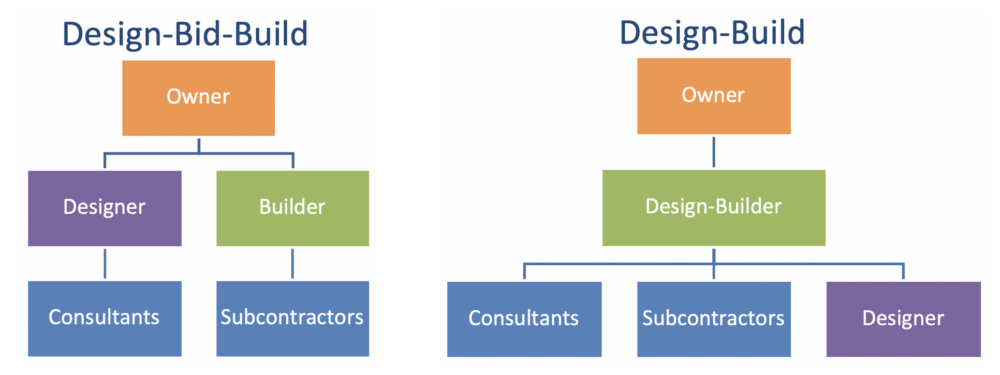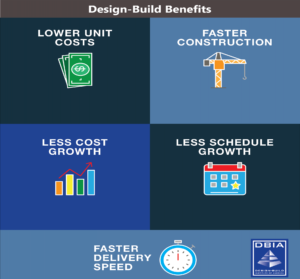
The methods used in traditional project management are now rather outdated. The procedure depends on the owner to manage the development of their project while coordinating and organizing other parties. Effectively communicating with each subcontractor may become quite
challenging, particularly if the project is complicated. This leads to unneeded misunderstandings and mistakes between all associated parties. The owner, designer, builders, consultants and subcontractors all need to understand one another when issues and problems occur. The Design-Build process promotes better communication amongst all parties, and this saves time, energy, and money.
 The Design-Build method enables problems to be resolved internally in the case of a communication breakdown without contacting project managers or owners. Additionally, the Design-Build method does away with the necessity for subcontractors to submit bids. This is another savings to the owner. Less time spent in the bidding process which results in less hassle, more time, and more money available for the actual project. With the aim of saving the business or themselves money, many project managers have used the Design-Bid-Build methodology. However, this strategy really has the opposite effect.
The Design-Build method enables problems to be resolved internally in the case of a communication breakdown without contacting project managers or owners. Additionally, the Design-Build method does away with the necessity for subcontractors to submit bids. This is another savings to the owner. Less time spent in the bidding process which results in less hassle, more time, and more money available for the actual project. With the aim of saving the business or themselves money, many project managers have used the Design-Bid-Build methodology. However, this strategy really has the opposite effect.
 The Design-Build Institute of America (DBIA) website provides good information and resources about the Design-Build industry. When DBIA compares Design-Build to Bid they believe Design-Build outperforms in every significant area. Their chart here summarizes these benefits. That being said, then Design-Bid-Build projects are becoming more obsolete. In particular, the bidding process can actually take a lot more time than expected which can then lead to a lost opportunity. The savings it was meant to achieve has been lost. This is why more businesses are deciding on the Design-Build approach.
The Design-Build Institute of America (DBIA) website provides good information and resources about the Design-Build industry. When DBIA compares Design-Build to Bid they believe Design-Build outperforms in every significant area. Their chart here summarizes these benefits. That being said, then Design-Bid-Build projects are becoming more obsolete. In particular, the bidding process can actually take a lot more time than expected which can then lead to a lost opportunity. The savings it was meant to achieve has been lost. This is why more businesses are deciding on the Design-Build approach.
References: projectsight.trimble.com


